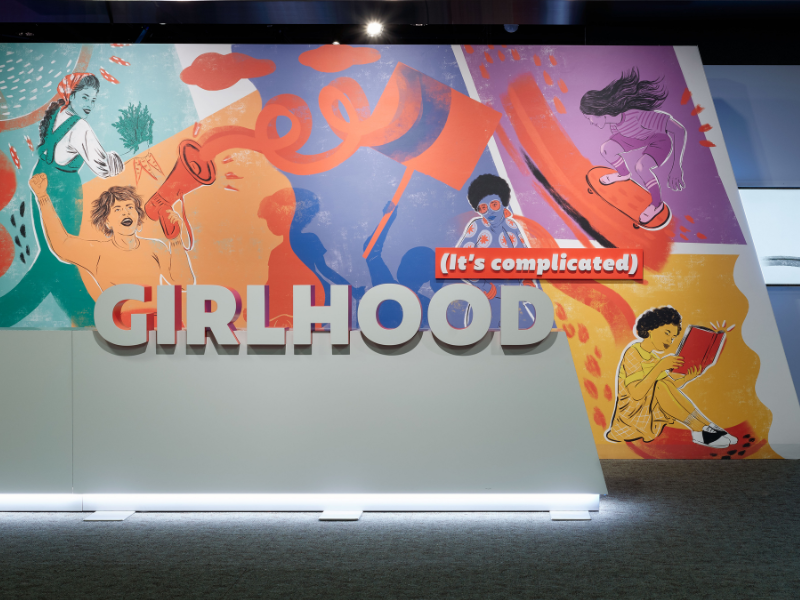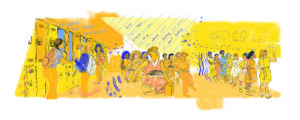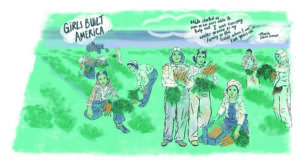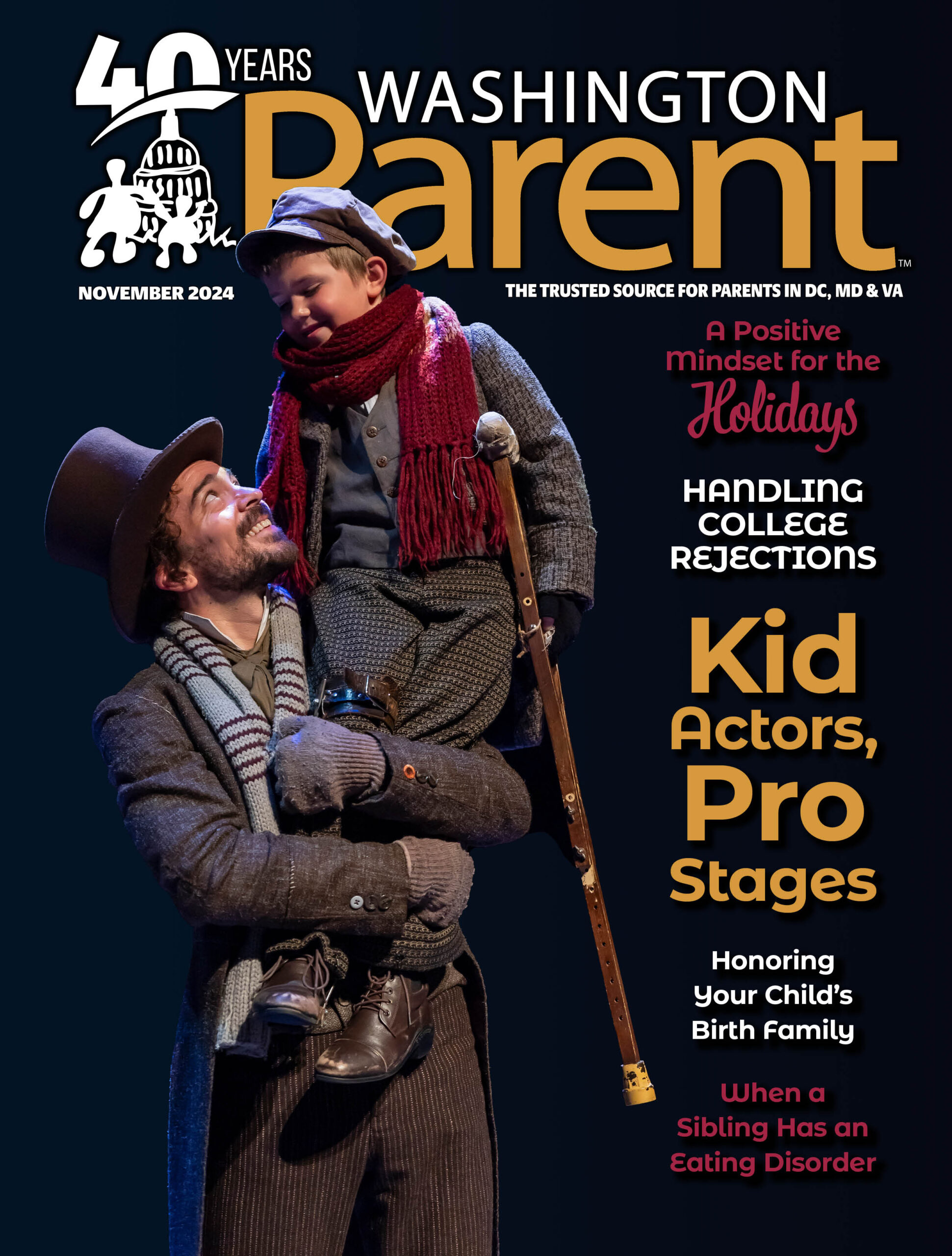Girlhood (It’s Complicated) Exhibit
In 2020, the National Museum of American History opened the exhibit, “Girlhood (It’s Complicated)” to celebrate the “Role of Girls in History During the 100th Anniversary of Women’s Suffrage.”
The exhibit, spanning 5,000 square feet, is family-friendly yet appropriately challenging for people of all ages and genders. By viewing and interacting with the artifacts, the museum visitor is educated, entertained and always left with the question to be answered: What does girlhood mean to you?
What exactly is girlhood?
The dictionary oversimplifies the definition of girlhood, merely referring to it as the state of being a girl, without incorporating its richness with trials and tribulations. By contrast, the museum digs deep into girlhood, calling to mind the evolution of the girl as she has made history and inspired change throughout the last 200 years.
The museum was inspired by the historical struggles made by women as early as 1776 when then first lady Abigail Adams implored her husband, then-president John Adams to incorporate women in the Declaration of Independence. Of course, that never happened, and it didn’t until 1920, when the 19th amendment of the Constitution of the United States was ratified, giving women the right to vote in elections.
It is this struggle in achieving suffrage, or the right to vote, which inspired the museum to create this exhibit in the first place. The museum wanted to spotlight girlhood in such a way as to demonstrate how girls and women have historically “spoken up, challenged expectations and used their voices to effect change.”
Girlhood: News and Politics
This exhibit is divided into five distinct sections, including one with biographical stories and interactive elements. The news and politics section helps attendees see how girlhood has evolved, inspiring once-shy girls “to speak up, to support a cause, or to use social media to change minds.” Perhaps the most compelling girl highlighted in this section is Virginia student Naomi Wadler, who in 2018, at the age of 11, gave a compelling speech at the March For Our Lives anti-gun protest in Washington, D.C.
Girlhood: Education (Being Schooled)
In the education section, visitors are shown that, “In school, girls are taught how to fit in, girls learn how to behave, what to wear, what to say and what to study. [However,] not all girlhoods are alike.”
This section, which highlights the significance of historical and modern dress code violations, gives people pause to think about how girls are constantly “dress coded and having to take classes about jobs and how to dress appropriately. It seems this issue is constantly up for debate,” observes the exhibit’s principal curator, Dr. Kathleen Franz.
Girlhood: Work (Hey, where’s my girlhood?)
In the work section, “Not all girls had a childhood [because] many had to work … [which] made industries more profitable.” Most of this section features moments in history from the mid-1800s through the mid-1900s when it was common for young girls to be forced into labor. Of note is the scandal involving radium poisoning, in which young girls were forced to put brush tips in their mouths to achieve fine points to paint watches. This resulted in the creation of labor laws to protect laborers.
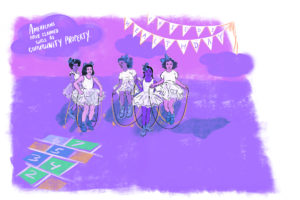
Girlhood: Wellness (Body Talk)
In the wellness section, thoughts are “centered on the ways girls’ bodies are different” and the many ways which girls’ bodies are regulated, controlled and inspected under a microscope. Of special note is the story of professional skateboarder Cindy White, who became the first girl to be featured in a skateboard magazine. Later on, she “founded the brand “Girl is NOT a 4 Letter Word” to make girls more visible in a male-dominated sport.”
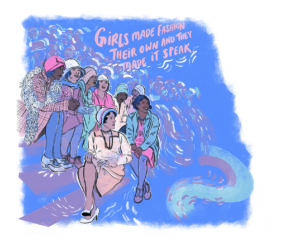
Talking about Girlhood
In addition to wanting museum visitors to view the artifacts in this exhibit and reflect on the meaning of girlhood, the museum wants everyone to provide their feedback on physical cards at a special station containing talkback cards. “The talkback cards are five questions … where people can write to us. They’re very popular. They encourage dialogue. You have very young kids doing these. Kids as young as 6, 7 and 8 years old can draw their authentic selves,” says Dr. Franz, when explaining the popularity of this type of engagement between the exhibit and museumgoers of all genders and ages.
Dr. Franz is most concerned with the specific ways in which individuals and families interpret the exhibit. While the museum does a comprehensive job discussing elements of politics, education, employment and wellness associated with girlhood, the focus is on the interpretation. While there are no right or wrong answers as to what exactly constitutes girlhood or how different people may view or define girlhood in their lives, it is the discussion that is most meaningful.
“What did you learn about being a girl in school? The theme of the exhibit is to talk about ways in which women have a voice in defining and redefining girlhood. Girls have been on the frontlines of American history and change,” says Dr. Franz. She also discusses how children of both genders have been influenced by the ways schools have taught facts about girls. It is those facts that have shaped our thinking and helped us define girlhood within our experiences.
Family-friendly visits and conversations about girlhood
The “Girlhood (It’s Complicated)” exhibit is appropriate for people of all genders and ages because it teaches the history of girls and invites open conversation about girlhood. The exhibit is open through Jan. 2, 2023. Admission is free, but timed-entry passes must be reserved in advance. See the museum’s website for more details: americanhistory.si.edu/exhibitions/girlhood-its-complicated.
Related
Empowering Girls in the Field of STEM
Keep Cool With Summer Reading Programs

